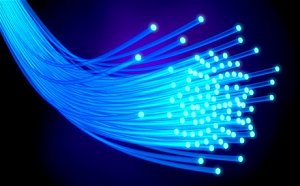Photonics researchers innovates fibre optic communication, overcoming power and distance barriers.

Progress in electrical engineering led to the overcoming of the main limits and barriers in fibre optic connection transmission, such as the need of limited distance where information can travel to allow accurate decryption by a receiver. Researchers at the University of California, San Diego, succeeded in increasing the maximum power, and consequently distance, of optical transmission through optical fibres. The new progress hides an interesting potential in increasing the data transmission rates for the optic cables, which can be imagined as the structure where information travels in cable, wireless and landline Internet networks.
This new research aims to offer a solution to a classic problem of the optical fibre. When increasing the data transmission beyond a certain limit, additional power leads to a distortion in the information travelling through the fibre optic cable. Nikola Alic, a research scientist from the Qualcomm Insitute explains: “Today’s fiber optic systems are a little like quicksand. With quicksand, the more you struggle, the faster you sink. With fiber optics, after a certain point, the more power you add to the signal, the more distortion you get, in effect preventing a longer reach. Our approach removes this power limit, which in turn extends how far signals can travel in optical fiber without needing a repeater.”
During the experiments, the researchers at the University of California succeeded in deciphering the information after a 12,000 kilometres record travel, through fibre optic cables using standard amplifiers and without repeaters.
The findings of the new study succeed in overcoming the need of placing electronic regenerators periodically along the fibre. Those electronic regenerators are complex units that need to be applied to every channel in the transmission. Those units are essential for the construction of an efficient optical network, and, in modern lightwave transmission, they carry between 80 to 200 channels influencing cost and quality of the services. Therefore, changing the classic set with the elimination of electronic regenerators would make an impact on the economy of network infrastructures, eventually bringing a more efficient and cheaper transmission of information.
The innovation can be resumed in the development of “frequency combs” that, as the researchers explained in the paper, ensures that the signal distortions called “crosstalk”, which is generated between streams of information travelling through the optical fibre for long distances, are predictable and consequently reversible at the receiving end of the optical fibre. The senior author of the paper Stojan Radic, a professor in the Department of Electrical and Computer Engineering at UC San Diego, explained: “Crosstalk between communication channels within a fiber optic cable obeys fixed physical laws. It’s not random. We now have a better understanding of the physics of the crosstalk. In this study, we present a method for leveraging the crosstalk to remove the power barrier for optical fiber”. Then he added: “Our approach conditions the information before it is even sent, so the receiver is free of crosstalk caused by the Kerr effect.” The photonics experiments were carried out by researchers from the Photonics Systems Group led by Stojan Radic at UC San Diego’s Qualcomm Institute.
Written by: Pietro Paolo Frigenti
